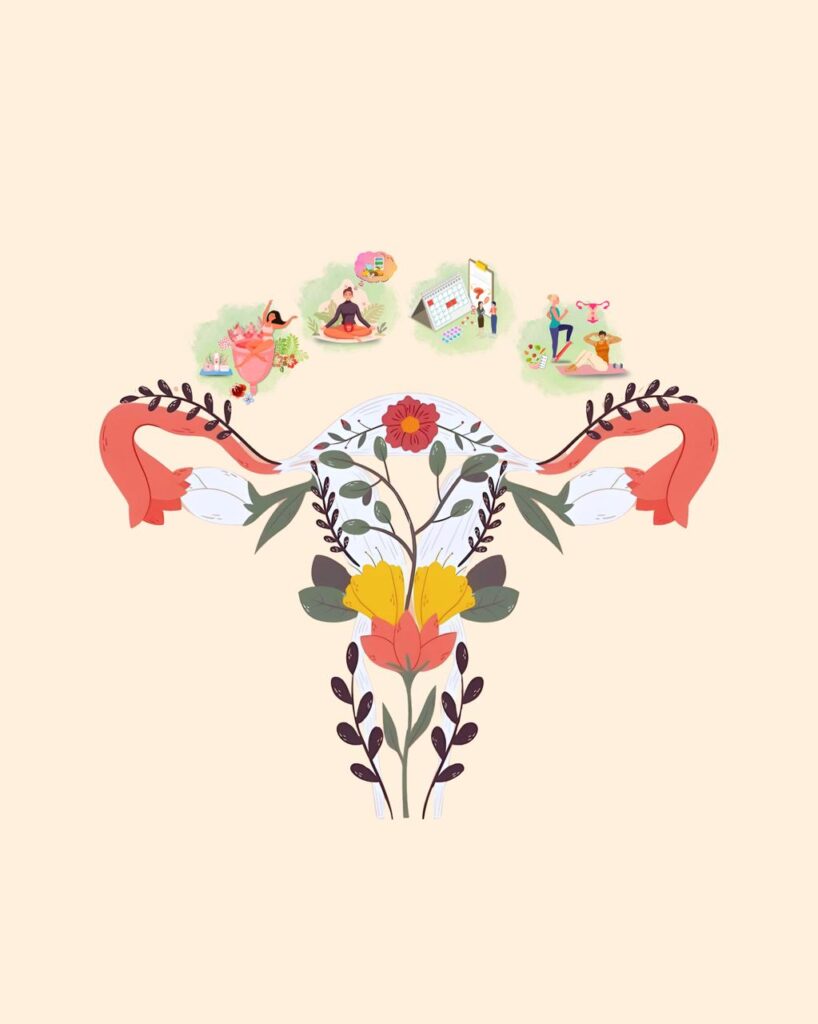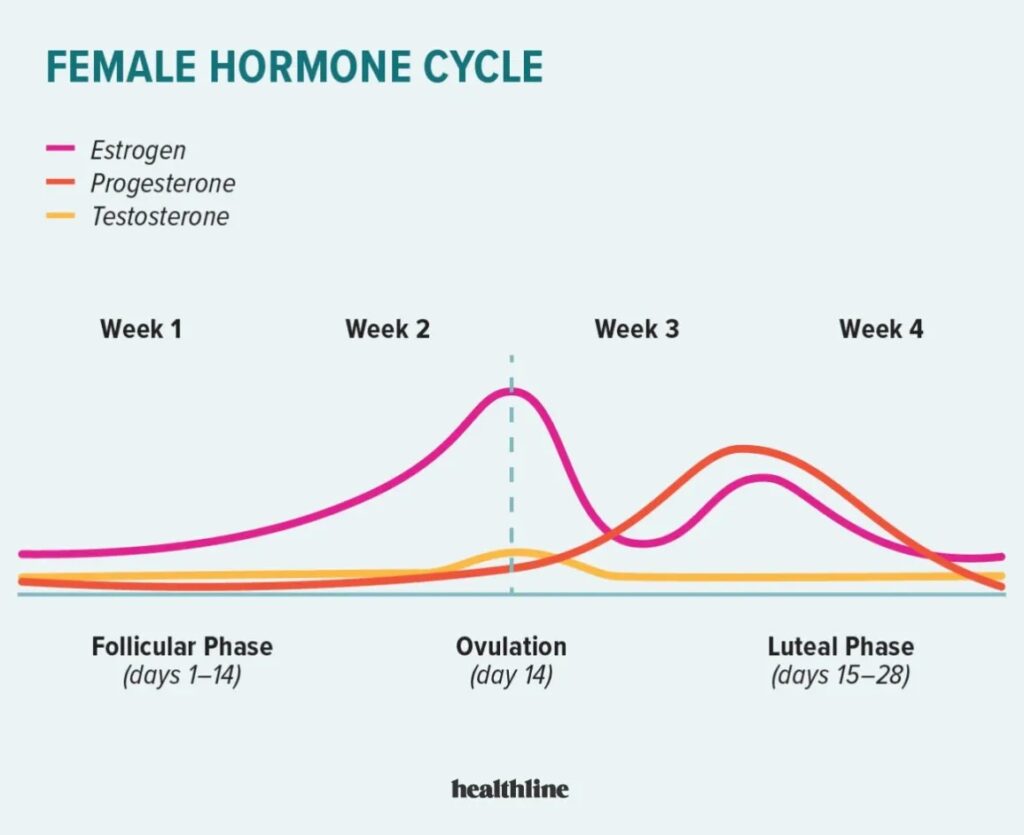Menstruation is an essential part of life for women during their reproductive years, yet for many, it’s far from simple. From discomfort to disruption, menstruation remains a process that causes confusion and can significantly affect a woman’s day-to-day well-being. In fact, many women continue to face challenges on how to navigate through their cycle and optimise the best of health and well-being.
So, what is the Menstrual Cycle?
The menstrual cycle is a monthly process of shedding of the unfertilized egg, tissue lining, blood and mucus from the uterus.
Key to reproduction, this process is an interplay of hormones and physiology.
It begins in the brain, which signals the release of hormones that stimulate egg development. A mature egg then travels from the ovary through the fallopian tube toward the uterus. If fertilization doesn’t occur, the egg is flushed out along with the uterine lining through the vagina—what we experience as a period.

The Phases:

IMAGE SOURCE: Healthline
1. Menstrual Phase (Days 1–5)
- What happens: Shedding of the uterine lining (endometrium) — the period.
- Hormones: Low levels of all hormones (estrogen, progesterone, FSH, LH).
- Trigger: Drop in progesterone and estrogen due to regression of the corpus luteum.
2. Follicular Phase (Days 1–13)
- What happens: Follicles in the ovary begin to mature. One becomes dominant.
- Hormones:
- FSH stimulates follicle growth.
- Estrogen rises and thickens the endometrial lining.
- FSH stimulates follicle growth.
- Estrogen peaks just before ovulation.
3. Ovulation (Day 14)
- What happens: Release of a mature egg from the ovary.
- Hormones:
- LH surge triggers ovulation.
- Estrogen drops slightly after.
- LH surge triggers ovulation.
- Marked by a sharp spike in LH (Luteinizing Hormone).
4. Luteal Phase (Days 15–28)
- What happens: Corpus luteum forms from the empty follicle and secretes hormones.
- Hormones:
- Progesterone rises and stabilizes the endometrial lining for possible implantation.
- Estrogen also remains at a moderate level.
- Progesterone rises and stabilizes the endometrial lining for possible implantation.
- If no pregnancy occurs: corpus luteum degrades → hormone levels drop → menstruation starts.
Menstrual Cycle Hormones Overview
| Hormone | When it’s Active | What it Does | Why It’s Needed | If It’s Too Low… |
| Estrogen | Mostly in Follicular Phase (Days 5–14) | – Grows uterine lining- Helps mature the egg | Prepares body for possible pregnancy | – Thin uterine lining- Irregular or missed periods- Mood swings |
| Progesterone | Mostly in Luteal Phase (Days 15–28) | – Maintains uterine lining- Keeps it stable for pregnancy | Supports early pregnancy if egg is fertilized | – PMS symptoms worsen-Lining sheds too early-Difficulty getting or staying pregnant |
| LH (Luteinizing Hormone) | Spikes at Ovulation (Day 14) | – Triggers egg release (ovulation) | Needed to release the mature egg | – No Ovulation-Irregular cycles- Fertility issues |
| FSH (Follicle-Stimulating Hormone) | Starts rising early (Days 1–5) | – Stimulates egg follicles to grow | Helps eggs mature in the ovaries | – Eggs don’t mature- Weak or no ovulation- Periods may stop |
Over the next blog- we’ll give you the perfect cycle syncing guide to ensure your movement, nutrition and health is practiced in a way that epitomizes your well-being!
Wishing you the best of Health,
Srishti & Ashmita
Team Nutri with Ti

